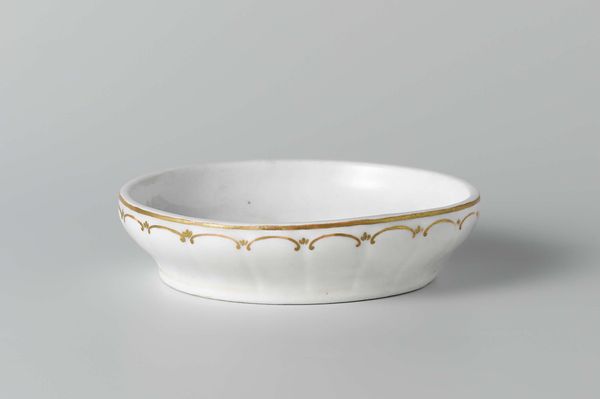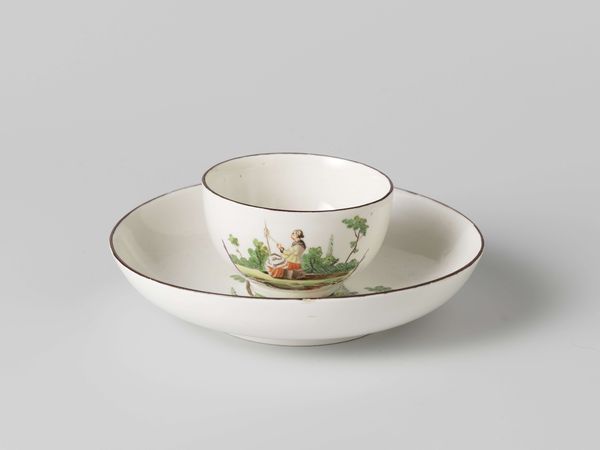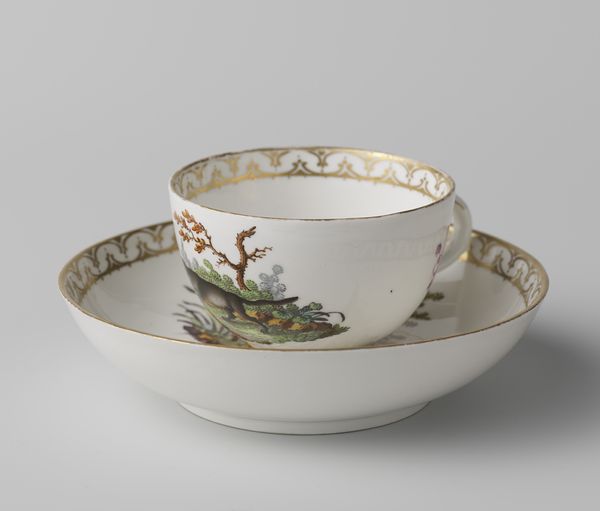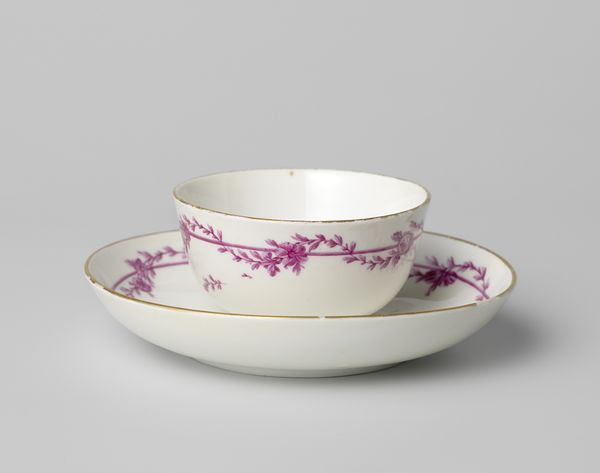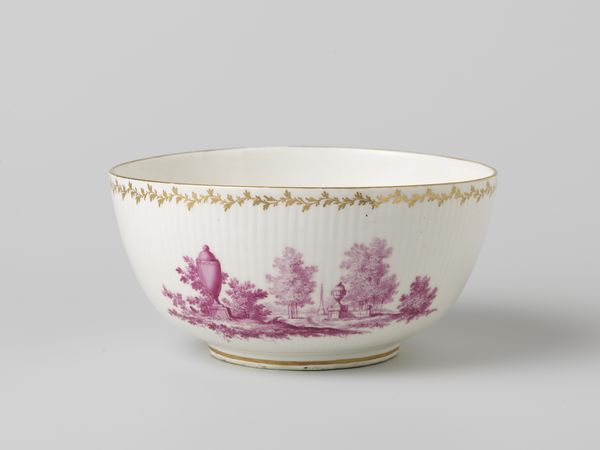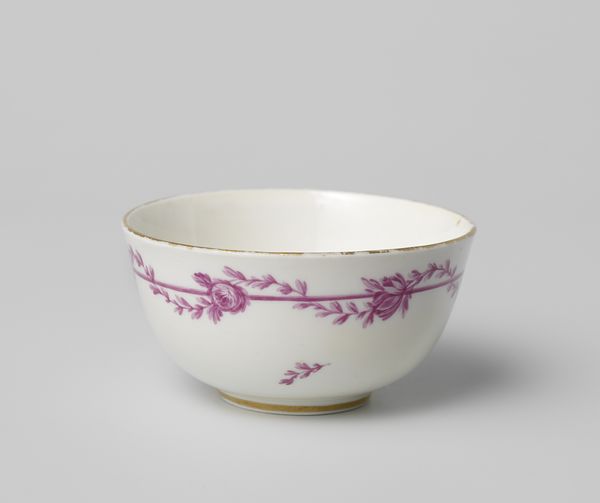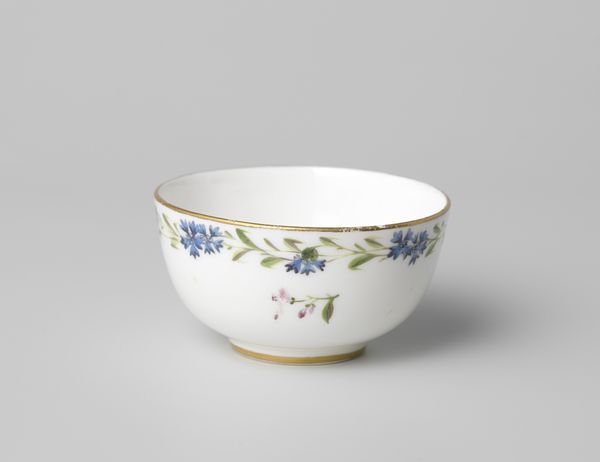
Dimensions: height 2.8 cm, diameter 11.5 cm
Copyright: Rijks Museum: Open Domain
Editor: These are two earthenware flowerpot containers, also known as cache-pots, with stands, made by Loosdrecht around 1778 to 1782. The delicate rococo style makes them seem precious, like they're meant to elevate the everyday act of keeping plants. What do you see in these containers? Curator: For me, these cache-pots aren't just decorative objects, but artefacts of class and colonialism. These weren't for just any flowers. Luxury items like this, made with delicate imported techniques and expensive materials, reflect the elite's relationship with the natural world. What was being cultivated here? The plants themselves, and more broadly control and cultivation of other lands. Editor: That's a great point, the plant inside these pots may be important. So how did the decorative arts during this period function in upholding specific social and political narratives? Curator: Objects like this served as visual props in constructing and solidifying social hierarchies. They represent the commodification of nature, transforming living things into status symbols. Moreover, Rococo's emphasis on ornamentation can be seen as a kind of visual excess that reflects the economic disparity of the time. Editor: I see how viewing them this way helps us to unpack so many power dynamics at play during the time. I appreciate you sharing this. Curator: Of course. Analyzing seemingly simple items through an intersectional lens lets us see how art and society influence one another.



